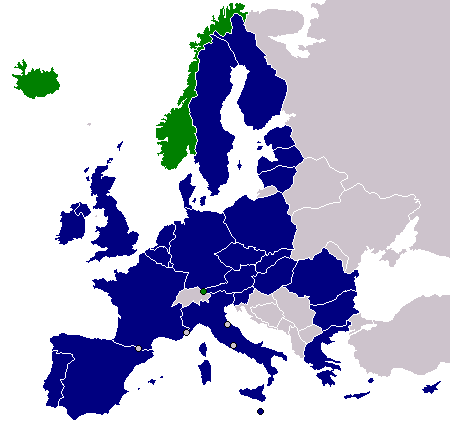 governments through trade, policy and cultural understanding. Perhaps the most widely-known of these endeavours is the European Union, a contract between 27 member states that includes a governing board on which sits representatives from each member. However, there is another, similar, agreement called the European Economic Area.The EEA is an agreement between 30 European countries — the 27 countries of the European Union (EU) and the three countries of the European Free Trade Association — Iceland, Liechtenstein and Norway. The EEA was created in 1994 as a union between countries and extended many of the policies of the EU to encompass the EFTA. The EU four freedoms are included in the agreement — the free movement of goods, services, persons and capital. However other EU provisions, such as the Customs Union and the Common Trade Policy, are not included in the EEA.
governments through trade, policy and cultural understanding. Perhaps the most widely-known of these endeavours is the European Union, a contract between 27 member states that includes a governing board on which sits representatives from each member. However, there is another, similar, agreement called the European Economic Area.The EEA is an agreement between 30 European countries — the 27 countries of the European Union (EU) and the three countries of the European Free Trade Association — Iceland, Liechtenstein and Norway. The EEA was created in 1994 as a union between countries and extended many of the policies of the EU to encompass the EFTA. The EU four freedoms are included in the agreement — the free movement of goods, services, persons and capital. However other EU provisions, such as the Customs Union and the Common Trade Policy, are not included in the EEA.
The EEA was created by a desire of EFTA countries to integrate with the European Community (EC) without actually becoming a part of it. The European Union was not created until 2009, but all the EC countries are a part of it.
EFTA countries value their independence and some leaders believe the governing body of the EC and the EU is too invasive — their attempt to impose rules and regulations upon member countries is sometimes obtrusive and interferes with current policy.
European Economic Area
The European Economic Area is a union comprised of all the countries of the European Union as well as Iceland, Liechtenstein and Norway.
The countries in the EEA are:
- Iceland
- Finland
- Denmark
- Netherlands
- Luxembourg
- Portugal
- France
- Greece
- Czech Republic
- Cyprus
- Lithuania
- Malta
- Slovenia
- Bulgaria
- Norway
- Sweden
- United Kingdom
- Germany
- Belgium
- Austria
- Spain
- Italy
- Liechtenstein
- Estonia
- Latvia
- Hungary
- Poland
- Slovakia
- Romania
